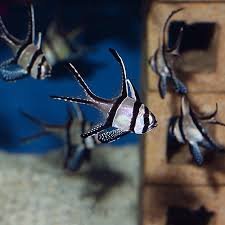
Throughout China’s history, its imperial dynasties have left behind a legacy not only of political dominance but also of cultural richness and grandeur. The palaces of the emperors, along with their royal treasures, serve as timeless symbols of imperial authority, cultural achievements, and the immense wealth accumulated over centuries. These palaces were more than just places of residence; they were political hubs, symbols of divine right, and repositories of invaluable artifacts that spoke to the opulence and power of China’s emperors. In this article, we will explore the significance of royal palaces and their treasured relics, examining how these palaces served as both a physical and symbolic foundation of the imperial system, as well as the priceless treasures that continue to captivate the world.
1. The Architecture of Imperial Palaces: A Reflection of Power
Royal palaces in China were not just architectural marvels; they were physical manifestations of the emperor’s divine right to rule and the cosmic order that he was meant to uphold. These magnificent buildings were designed with meticulous attention to detail, incorporating elements of Chinese cosmology, culture, and philosophy. A palace’s architecture was meant to reflect the emperor’s status as the Son of Heaven, the intermediary between Earth and the divine, and its design often followed strict guidelines.
The Forbidden City: The Crown Jewel of Imperial Architecture
The Forbidden City (紫禁城, Zǐjìnchéng) in Beijing stands as the epitome of Chinese imperial palace architecture. Built between 1406 and 1420 during the Ming Dynasty, this vast complex was home to 24 emperors over a span of almost 500 years, from the Ming to the Qing Dynasty. The palace complex is a masterpiece of traditional Chinese architecture, meticulously planned and constructed according to principles that symbolized the emperor’s central role in both the spiritual and political realms.
The Forbidden City is made up of nearly 1,000 buildings and covers about 180 acres. It is surrounded by a large defensive wall and a deep moat, symbolizing the separation between the emperor and the common people. The design of the Forbidden City follows the principle of symmetry, with the emperor’s throne room positioned at the center of the complex, signifying his role at the center of the universe. The use of color is also highly symbolic: yellow, the color of the emperor, is dominant, while the layout of the rooms adheres to the principles of feng shui, ensuring harmony with the natural and spiritual worlds.
Other Notable Imperial Palaces
While the Forbidden City is the most famous, other notable imperial palaces include the Summer Palace (颐和园, Yíhéyuán) and the Palace of Heavenly Purity (乾清宫, Qiánqīnggōng). The Summer Palace, with its stunning landscapes, was used by emperors for leisure and relaxation, but it also symbolized the harmonious relationship between man and nature. The Palace of Heavenly Purity, located within the Forbidden City, was the emperor’s official residence and the site of many significant state rituals and ceremonies.
2. Royal Treasures: Symbols of Imperial Glory
The treasures housed within the imperial palaces were far more than valuable possessions; they were symbols of the emperor’s wealth, power, and divine favor. These treasures, which included fine art, jade, porcelain, gold, and precious stones, often had deep cultural and spiritual significance. They were used for ceremonial purposes, diplomatic gifts, and as part of the elaborate rituals that defined the imperial court.
Jade: The Emperor’s Precious Stone
Jade has long been a symbol of imperial China, prized for its rarity, beauty, and believed mystical properties. The emperor’s collection of jade pieces was considered sacred and was used in a variety of rituals, including sacrificial offerings and as symbolic objects of the emperor’s connection to the divine. Some jade artifacts were carved with intricate designs depicting animals, mythological creatures, and auspicious symbols, meant to protect the emperor and bring prosperity to the empire.
One of the most famous pieces of jade is the Jade Cabbage from the Qing Dynasty, which is considered a masterpiece of Chinese jade carving. This exquisite piece, now housed in the Palace Museum in Beijing, depicts a cabbage with a praying mantis perched atop it, symbolizing both fertility and good fortune. Such pieces were not merely decorative; they were regarded as powerful symbols of imperial authority and good luck.
Porcelain: The Treasure of the Emperor
Porcelain was another important treasure in the imperial court, valued not only for its craftsmanship but also for its status as a symbol of refinement and cultural prestige. The imperial kilns of Jingdezhen in Jiangxi Province produced some of the finest porcelain ever made, often commissioned by the emperor for personal use or as gifts to foreign dignitaries. Blue and white porcelain, particularly during the Ming Dynasty, became synonymous with the elegance of the Chinese imperial court.
One of the most famous porcelain pieces from the imperial collection is the Ming Dynasty’s “Dragon and Phoenix” bowl, a highly prized artifact known for its intricate design and symbolism. The dragon and phoenix were powerful symbols of the emperor and empress, representing power and harmony, respectively. Such porcelain pieces were not just decorative; they carried deep political and cultural meaning, showcasing the wealth and cultural prowess of the empire.
Gold and Silver Treasures
Gold and silver were also highly prized in the imperial court, and many royal treasures were crafted from these metals. Elaborate gold and silver vessels, including goblets, candelabras, and ceremonial plates, were used in important state functions and religious rituals. These treasures were often encrusted with jewels, making them not only valuable but stunning in their beauty. Some gold objects, such as the golden seal of the emperor, were considered symbols of imperial authority and were used to validate official documents and decrees.
Imperial Relics and Gifts from Foreign Lands
Throughout Chinese history, emperors often received diplomatic gifts from foreign rulers, and these gifts became valuable additions to the imperial collection. Objects from Central Asia, the Middle East, and Europe were highly sought after for their rarity and craftsmanship. For instance, Persian carpets, Arabian silver, and European clocks were cherished by Chinese emperors, adding to the cultural and material richness of the imperial court.
3. The Role of Royal Treasures in Court Life and Rituals
The treasures of the royal palaces were not just material objects; they had profound spiritual, political, and ceremonial significance. They played an integral role in the emperor’s daily life and were crucial to the maintenance of imperial power.
Ceremonial Uses of Royal Treasures
In the imperial court, treasures were used during key ceremonies, such as the emperor’s New Year celebrations, ancestral rites, and the annual rituals at the Temple of Heaven. Jade pieces, gold vessels, and porcelain were used in sacrifices and offerings to the gods and ancestors, symbolizing the emperor’s commitment to maintaining harmony between heaven and earth.
The emperor’s coronation ceremony was another occasion where royal treasures played an important role. During this grand event, the emperor would wear elaborate robes and jewelry, and the imperial regalia, including the dragon robes and golden scepter, would be presented to him as symbols of his divine right to rule.
Royal Gifts and Diplomacy
The emperor’s treasures also served as diplomatic tools. Gifts of porcelain, jade, and gold were often exchanged with foreign rulers as symbols of goodwill and strength. These diplomatic gifts helped maintain China’s position as the dominant power in East Asia and beyond, establishing China as a center of cultural and material excellence.
4. Preserving the Royal Treasures: The Legacy of the Forbidden City
Many of the royal treasures that once belonged to the emperors are now housed in museums, particularly the Palace Museum in Beijing, which is located in the Forbidden City. These artifacts have been preserved for future generations, not only as symbols of China’s imperial past but also as representations of the country’s cultural heritage. The collection at the Palace Museum is one of the largest and most valuable in the world, containing over a million objects, including paintings, calligraphy, ceramics, and jade artifacts.
These treasures continue to fascinate people worldwide, offering a glimpse into the wealth, culture, and spiritual life of China’s imperial court. The preservation of these treasures is a testament to the enduring legacy of China’s emperors and their profound impact on the country’s history and culture.
Conclusion
The palaces and royal treasures of China offer a unique window into the grandeur and spiritual life of its imperial dynasties. These palaces were not merely homes for emperors but symbols of their divine right to rule and their responsibility to maintain harmony between heaven and earth. The treasures within these palaces, from jade and porcelain to gold and silver, were more than material possessions; they were sacred objects that reinforced the emperor’s power and legitimacy. Today, these treasures continue to captivate people around the world, serving as enduring symbols of China’s rich cultural and imperial heritage.



